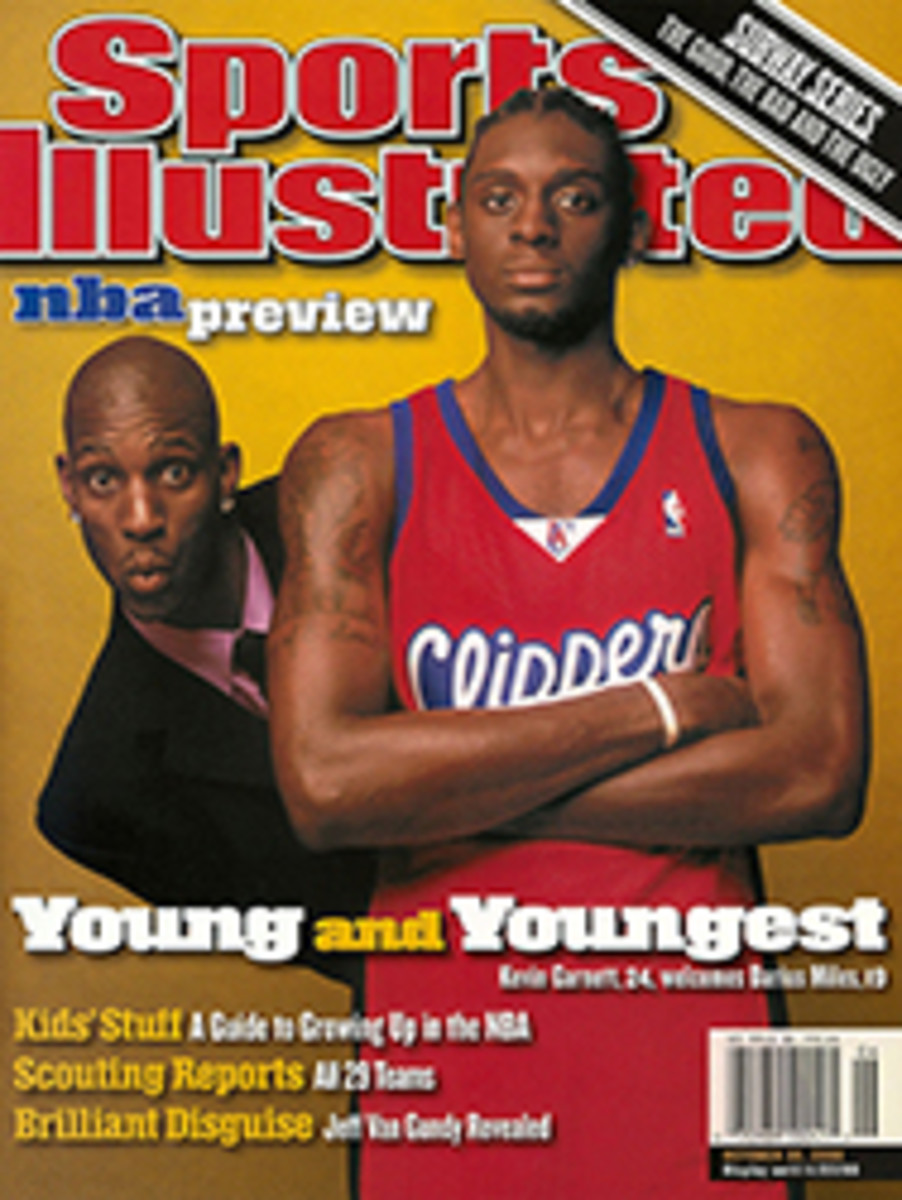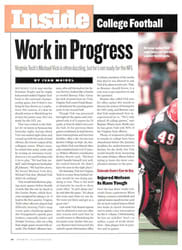
4 New York Knicks The Post-Patrick era finds them light at center, bloated at guard and far from the comfort zone
When Patrick Ewing was traded to the Sonics in September, not one
of his former Knicks teammates telephoned him to commiserate.
Indeed, comments after that monumental swap suggest that none of
them really wanted Ewing back in New York--and that Ewing himself
was far from eager to return. Only in the Big Apple could an
11-time All-Star with more than 23,000 points and 10,000 rebounds
be best remembered for another stat: zero NBA championships.
Ewing's critics point to last season's conference finals against
the Pacers, in which the Knicks won the two games that Ewing
missed with a foot injury and lost all four games in which he
played. Even in a recent homage to Ewing in The New York Times,
longtime Knicks season-ticket holder Woody Allen couldn't resist
voicing what many New York fans had been asking for a while:
"Will the Knicks be better without him?" (His answer was no,
which he acknowledged put him in the minority.) While no Knick
has dared to answer that question directly, on the opening day of
training camp several players admitted to a sense of
excitement--and trepidation--at the outset of the post-Ewing era.
"It's kind of eerie not seeing him around," says Marcus Camby.
"For such a long time when you thought of the Knicks, you thought
of Patrick. You wonder, Who will be the team's new identity?"
A more pertinent question is, Who will be the team's new center?
With the rumored trade for the Hawks' Dikembe Mutombo not
happening anytime soon, the Knicks will attempt to replace Ewing
with a center-by-committee consisting of Camby, Travis Knight,
Luc Longley, Felton Spencer and Kurt Thomas. "They're all
capable," says coach Jeff Van Gundy, "but when you need a huge
rebound or a stop in the fourth quarter, you miss a player of
greatness."
The Knicks would settle for goodness, and Camby is the most
likely candidate. He has yet to live up to the expectations he
brought as the NBA's second overall pick in 1996 and is still
battling a nagging knee injury, but Camby is the one Knick
capable of blocking a shot, and he's by far the best rebounder on
a team that ranked last in the league in that category a year
ago--before trading Ewing. When Ewing missed the first 20 games of
last season with an Achilles tendon injury, Camby averaged 12.6
points and 7.8 rebounds a game. "Fortunately, whoever plays
center for us just needs to control the paint," Camby says. "We
already have a lot of scorers."
Which brings up another stumbling block for these Knicks: their
congestion at shooting guard. The arrival of Glen Rice from the
Lakers in the Ewing deal, added to Allan Houston and Latrell
Sprewell, gives the Knicks a trigger-happy trio, and maybe a
contentious one. Sprewell stated repeatedly during the preseason
that a trade might be needed to maintain team sanity. "It makes
all of us uncomfortable," Knicks president Dave Checketts said of
his guard-heavy roster, "but I'm comfortable with the
discomfort."
Van Gundy insists that just because Ewing is gone, nobody should
expect his blue-collar club to morph into the Showtime Lakers.
And while Ewing was always the team's most convenient scapegoat,
the Knicks' coach is determined to see that he does not continue
in that role in absentia. "We can't use Patrick's absence as an
excuse," Van Gundy says. "I've told the guys, 'It's very hard to
run forward if you're looking back.'"
New York has the NBA's longest current streak of trips to at
least the second round of the playoffs (nine), but if that run
ends in this year after Ewing, everybody's discomfort will become
much less comfortable.
--T.C.
COLOR PHOTO: ROBERT BECK CONGESTION Houston will find a crowd on his own team this year in the Knicks' heavily populated backcourt.
In Fact
Glen Rice is one of only two players to rank among the NBA's
alltime top 10 in both three-point field goals made (1,353,
third) and three-point field goal percentage (40.5%, seventh).
Knicks nemesis Reggie Miller is the other.
Projected Lineup
STARTERS 1999-2000 KEY STATS
PVR*
SF Latrell Sprewell 18.6 ppg 4.3 rpg 4.0 apg 1.33 spg 43.5 FG%
39
PF Larry Johnson 10.7 ppg 5.4 rpg 2.5 apg 0.60 spg 43.3 FG%
116
C Marcus Camby 10.2 ppg 7.8 rpg 1.97 bpg 0.73 spg 48.0 FG%
79
SG Allan Houston 19.7 ppg 3.3 rpg 2.7 apg 48.3 FG% 43.6 3FG%
45
PG Charlie Ward 7.3 ppg 4.2 apg 3.2 rpg 1.32 spg 42.3 FG%
130
BENCH 1999-2000 KEY STATS
PVR*
F-G Glen Rice[1] 15.9 ppg 4.1 rpg 2.2 apg 43.0 FG% 36.7 3FG%
55
F Kurt Thomas 8.0 ppg 6.3 rpg 0.64 spg 0.53 bpg 50.5 FG%
161
G Chris Childs 5.3 ppg 4.0 apg 2.1 rpg 40.9 FG% 35.6 3FG%
219
C Luc Longley[1] 6.3 ppg 4.5 rpg 1.1 apg 0.58 bpg 46.6 FG%
244
F-C Travis Knight[1] 1.7 ppg 2.0 rpg 0.4 apg 39.0 FG% 60.7 FT%
308
[1]New acquisition (R) Rookie (statistics for final college year)
*PVR: Player Value Ranking (explanation on page 113)
THE BOOK
an opposing team's scout sizes up the Knicks
"They may have slipped a little, but the Knicks are mentally
tougher than every team in the East except the Heat, and they're
unselfish in a lot of ways. New York is one of the best-executing
teams offensively, and maybe the best defensive team in terms of
discipline and preparation.... Luc Longley has won three
championships playing as a complementary piece. It isn't
far-fetched to say he can be a good player for them after he
comes back from his knee injury.... Larry Johnson is still
effective. What they lack is a second big guy to score down low.
Say what you want about Patrick Ewing, but when he caught the
ball in the post, he usually got a clean shot off and shot a good
percentage.... I've always thought Glen Rice was more about
winning than other people give him credit for. I bet he's going
to make a great effort defensively, because defense is one of the
covenants for New York. If you're Glen Rice, coming off a
championship and being criticized the way he was, you're going to
do everything you can to have a big year."

